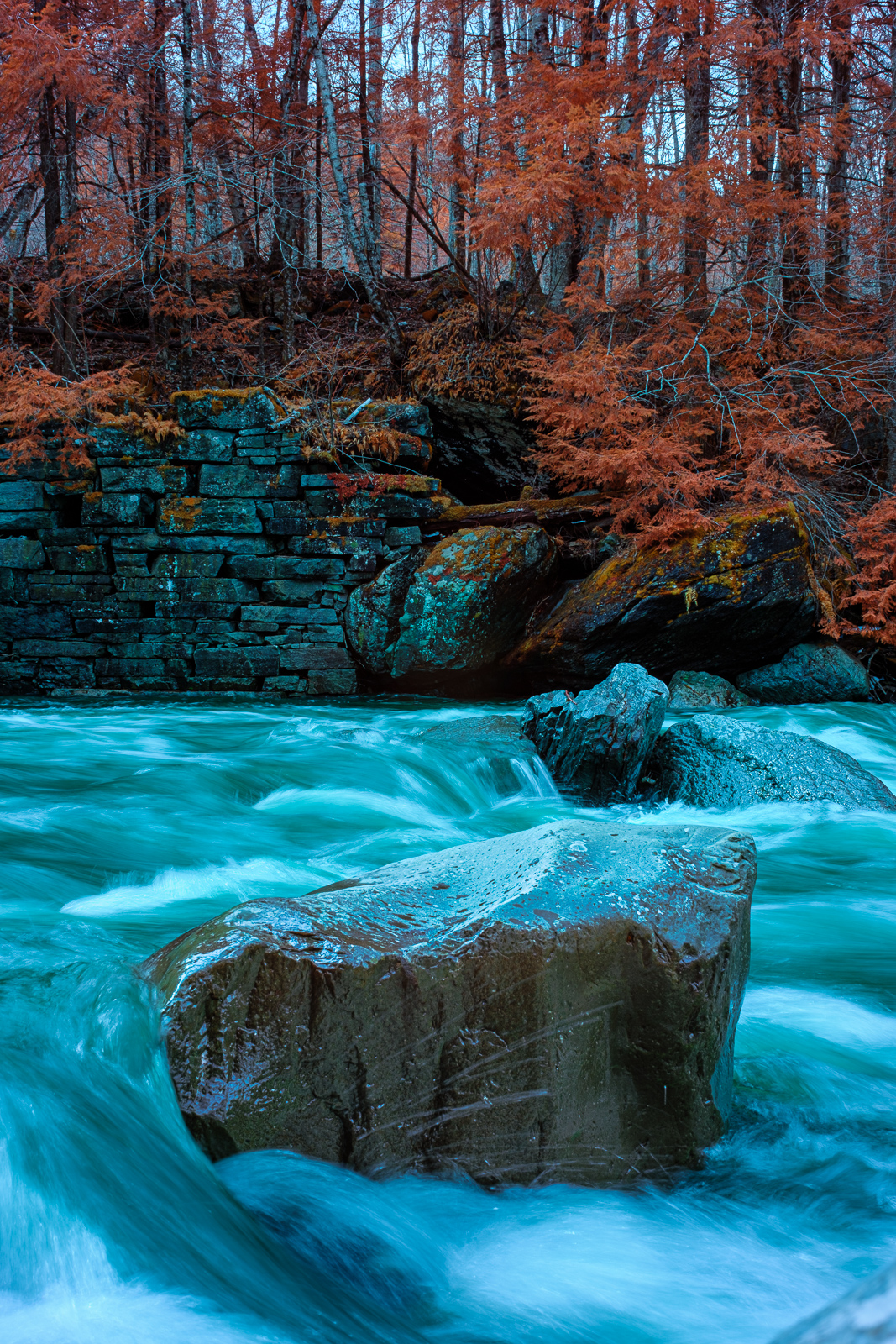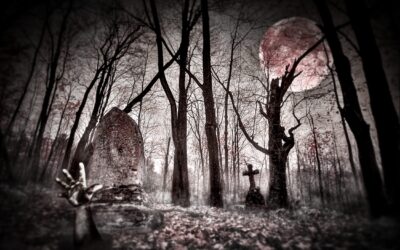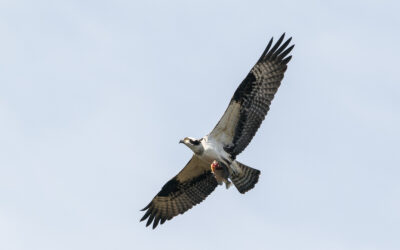Candy Chrome or IR Chrome, however you wish to call it, was developed for the Vietnam War. I haven’t tried it yet, but it is supposed to be excellent at finding people covered in camouflage in dense jungle vegetation. One of these days, I will test how well it does that in the sweltering heat of the dense Vermont jungle. In the meantime, it is a fun little effect to play with on landscape shots.
There are many problems with shooting infrared (IR) photography:
- You need a special filter
- It is best to use a unique camera body converted for IR photography
- IR filters are picky about the lenses it likes
- You need good editing software to adjust it because out-of-the-camera images can be a little on the single-color side
- You absolutely need the right subject
All of that adds up to the word “expensive”… even in the photography hobby.
I have been shooting infrared for decades. A lucky flaw in an old Sony camera’s night shooting mode made it inexpensive to buy a special infrared screw-on filter that transformed that camera into “infrared mode.” That was a nice package for a camera I already owned. It got me hooked on IR. I used LifePixel in my Canon shooting days, and now I use Kolari with my Fujis. Kolari uses a filter on top of the sensor that is easy to switch for varying levels of IR. The Candy Chrome filter was something I bought on a whim for fun. I am enjoying it more than I thought I would. I like the challenge.
Candy Chrome photography is worse than infrared!
Regular IR images can be amazing black-and-white shots. Now that I think of it, Candy Chrome might also make some cool black-and-whites. I need to try this! As for color, Candy Chrome will turn vegetation red. This is probably what made it so good at pulling people out of the vegetation. No matter how much you like tomatoes (technically a fruit), red veggies get old to look at. At least in the fall, the trees have oranges and yellows to accompany those reds, but it isn’t the same when they’re all red.
Candy Chrome is so specialized that you must be super picky about your subject and sharing amount.
When Candy Chrome is fun
Arguably, it is always fun. Depends on what you’re into. Why don’t we define “fun” as something pleasing for other people to view? Subjects that play well on Instagram and Facebook.
Trees are a good backdrop. Water is as well. With the right tweaks, tree leaves turned red can look a lot more like fall than full-blown candy chrome. Water gets a turquoise hue that makes it very pretty. Things get dreamy and surreal if you can get both in the scene.
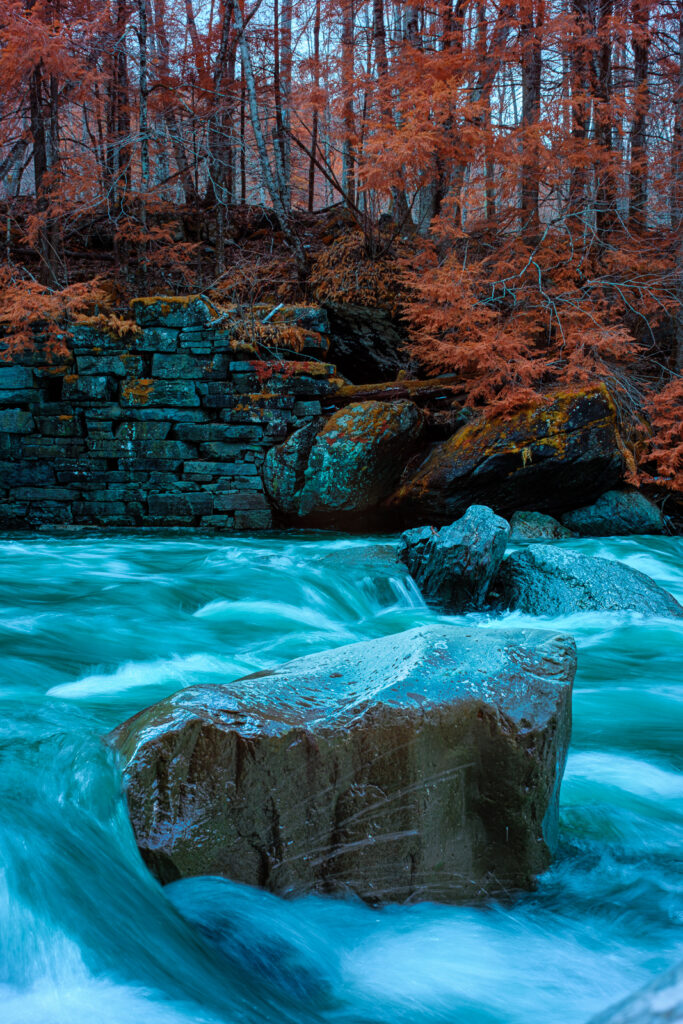
The image above was taken in March. The river was raging with snowmelt and with little sunlight to pronounce highlights on the rapids. To the naked eye, the water was dark. The trees are evergreens. No other trees have leaves in Vermont during March. You can see the reddish effect on the mossy rocks, too.
Candy Chrome transformed the raging waters into a pleasing turquoise with highlights on the breaking waves. It also turned the evergreens into supernatural “everreds” while giving the deep background greys a foggy appearance. Due to the lighting of the day (or lack thereof), Candy Chrome enhanced the scene. Overall, Infrared can be good at this.
Is it Candy Chrome?
Moving into the scene to focus on subjects that may naturally show the reds and turquoises of candy chrome is another way to have fun with this effect. You can fool the viewers into thinking this is a fantastic moment when some cool colors come together.
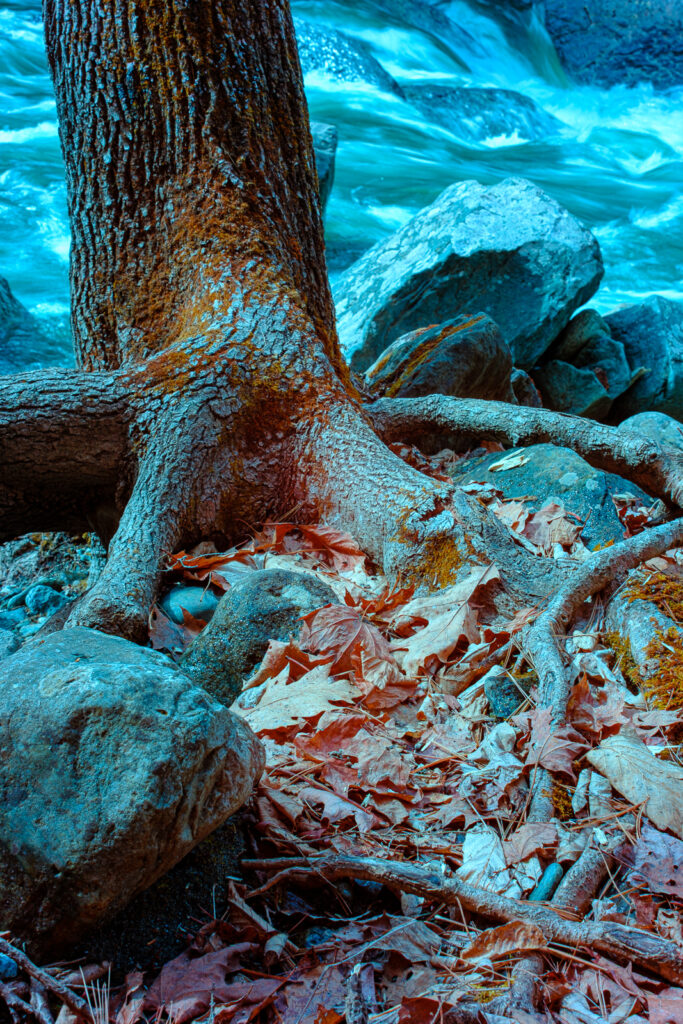
Unfortunately, the photo above also displays some of the weaknesses of candy chrome (infrared in general) and a poorly shot exposure. It was shot handheld with a Fuji “kit lens” that is a little soft. A narrower aperture (f11 to f16) would have been better for sharpening the rocks in the river. A tripod would have been even better! Aside from the photographer messing up, this website also compresses these jpegs to remove some of the sharpness. Have you ever been excited about an image on your computer that didn’t look as good when you uploaded it to Facebook or Instagram? Same here.
The more significant issue to understand is the softening + lightening in the center of the image. Some lenses do not play well with infrared filters. The biggest flaw in the combo shows dead-center in the photo. Usually, the flaw is very apparent as an almost white spot that is nearly impossible to fix. The image above did not suffer from that extreme and was mostly fixable. Look at the main tree root in the center of the frame. Notice how it is lighter than the rest of the tree?
To fix this, I used multiple gradient masks in Lightroom to make the leaves brighter. Now, the bright spot is more challenging to find, and those who do not know this infrared flaw would believe the light was stronger in this portion of the image.
Conclusion
Candy Chrome is a challenge. It takes a financial investment, time, and planning to get it right. If you enjoy pushing your photography to the limits, this can be a fun way to do it. But I would not recommend converting a camera solely for Candy Chrome shooting. If you can use a different filter on a camera you already use for infrared, that is the way to go.

